Mercedes EQT vs Tesla Model 3 – Differences & prices compared
Compare performance, boot space, consumption and price in one view.
Find out now: which car is the better choice for you – Mercedes EQT or Tesla Model 3?
The Mercedes EQT (High Roof Estate) comes with a Electric engine and Automatic transmission. In comparison, the Tesla Model 3 (Sedan or Hatchback) features a Electric engine with Automatic transmission.
When it comes to boot capacity, the Mercedes EQT offers 551 L, while the Tesla Model 3 provides 594 L – depending on how much space you need. If you’re looking for more power, decide whether the 122 HP of the Mercedes EQT or the 460 HP of the Tesla Model 3 suits your needs better.
In terms of consumption, the values are 19.50 kWh per 100 km for the Mercedes EQT, and 13.20 kWh for the Tesla Model 3.
Price-wise, the Mercedes EQT starts at 27800 £, while the Tesla Model 3 is available from 34300 £. Compare all the details and find out which model fits your lifestyle best!
Mercedes EQT
The Mercedes-Benz EQT represents a new chapter in the world of electric vehicles, seamlessly combining elegance with practicality. Its interior offers a sophisticated design, featuring premium materials and advanced technology to ensure a comfortable driving experience. On the road, the EQT impresses with its smooth handling and efficient electric powertrain, making it a strong contender in the growing market of eco-friendly family cars.
details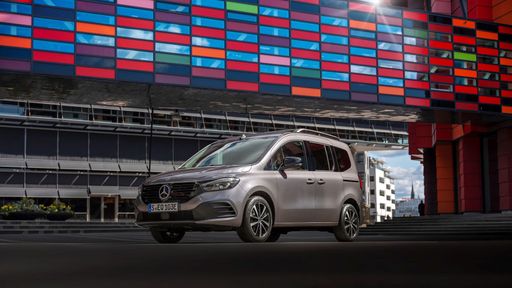 @ Mercedes-Benz
@ Mercedes-Benz
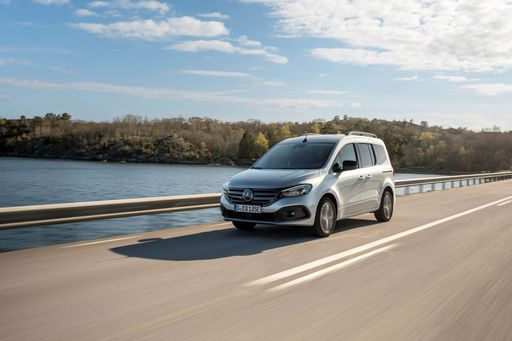 @ Mercedes-Benz
@ Mercedes-Benz
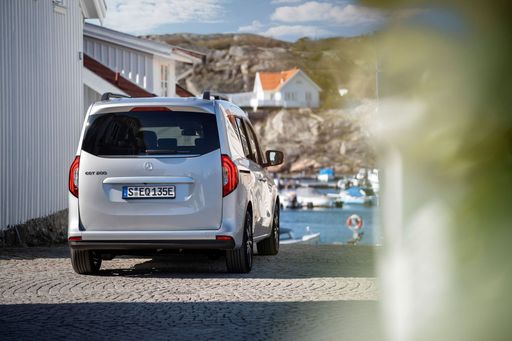 @ Mercedes-Benz
@ Mercedes-Benz
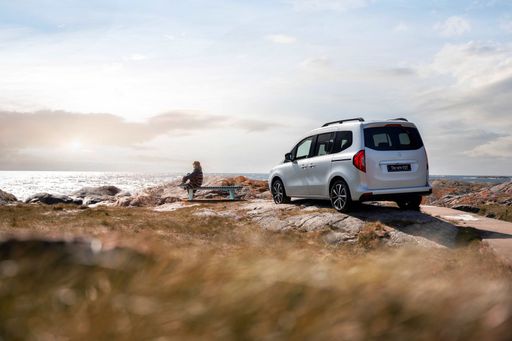 @ Mercedes-Benz
@ Mercedes-Benz
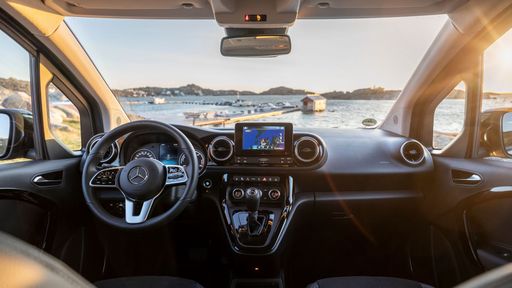 @ Mercedes-Benz
@ Mercedes-Benz
Tesla Model 3
The Tesla Model 3 stands out in the electric vehicle market with its sleek design and impressive performance capabilities. It offers a seamless driving experience that combines advanced technology with minimalistic interiors, creating a futuristic feel on the road. Additionally, its range and charging infrastructure make it a practical choice for both city commuting and longer journeys.
details @ tesla.com
@ tesla.com
 @ tesla.com
@ tesla.com
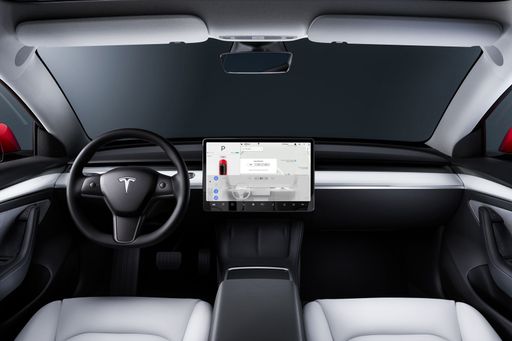 @ tesla.com
@ tesla.com
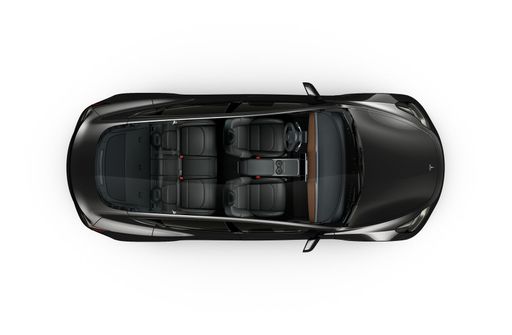 @ tesla.com
@ tesla.com

|

|
|
|
|
Costs and Consumption |
|
|---|---|
|
Price
27800 - 32100 £
|
Price
34300 - 50100 £
|
|
Consumption L/100km
-
|
Consumption L/100km
-
|
|
Consumption kWh/100km
19.5 - 20.8 kWh
|
Consumption kWh/100km
13.2 - 16.7 kWh
|
|
Electric Range
265 - 278 km
|
Electric Range
513 - 702 km
|
|
Battery Capacity
45 kWh
|
Battery Capacity
64.5 - 79 kWh
|
|
co2
0 g/km
|
co2
0 g/km
|
|
Fuel tank capacity
-
|
Fuel tank capacity
-
|
Dimensions and Body |
|
|---|---|
|
Body Type
High Roof Estate
|
Body Type
Sedan, Hatchback
|
|
Seats
5
|
Seats
5
|
|
Doors
5
|
Doors
4 - 5
|
|
Curb weight
1925 - 2023 kg
|
Curb weight
1822 - 1929 kg
|
|
Trunk capacity
242 - 551 L
|
Trunk capacity
594 L
|
|
Length
4498 - 4922 mm
|
Length
4720 - 4724 mm
|
|
Width
1859 mm
|
Width
1850 mm
|
|
Height
1819 - 1830 mm
|
Height
1431 - 1440 mm
|
|
Max trunk capacity
1979 L
|
Max trunk capacity
-
|
|
Payload
457 - 531 kg
|
Payload
303 - 333 kg
|
Engine and Performance |
|
|---|---|
|
Engine Type
Electric
|
Engine Type
Electric
|
|
Transmission
Automatic
|
Transmission
Automatic
|
|
Transmission Detail
Reduction Gearbox
|
Transmission Detail
Reduction Gearbox
|
|
Drive Type
Front-Wheel Drive
|
Drive Type
Rear-Wheel Drive, All-Wheel Drive
|
|
Power HP
122 HP
|
Power HP
283 - 460 HP
|
|
Acceleration 0-100km/h
12.60 s
|
Acceleration 0-100km/h
3.1 - 6.1 s
|
|
Max Speed
132 km/h
|
Max Speed
201 - 262 km/h
|
|
Torque
245 Nm
|
Torque
420 - 660 Nm
|
|
Number of Cylinders
-
|
Number of Cylinders
-
|
|
Power kW
90 kW
|
Power kW
208 - 338 kW
|
|
Engine capacity
-
|
Engine capacity
-
|
General |
|
|---|---|
|
Model Year
2023 - 2024
|
Model Year
2023 - 2024
|
|
CO2 Efficiency Class
A
|
CO2 Efficiency Class
A
|
|
Brand
Mercedes-Benz
|
Brand
Tesla
|
Mercedes EQT
Revolutionising the Road: The Mercedes-Benz EQT
Mercedes-Benz continues to redefine the automotive landscape with its groundbreaking electric vehicles, and the EQT is no exception. Combining cutting-edge technology with Mercedes-Benz's celebrated design ethos, the EQT is poised to make a significant impact in the world of electric transport.
Electrifying Performance
At the heart of the EQT's performance is its robust electric motor, delivering a commendable 122 PS (90 kW). This powertrain is perfectly complemented by a smooth and efficient automatic transmission, ensuring that all journeys are as seamless as they are enjoyable. With a torque of 245 Nm, the EQT is able to effortlessly tackle city streets and motorways alike.
Efficiency and Range
One of the standout features of the EQT is its impressive efficiency. With an energy consumption range of 19.5 to 20.8 kWh per 100 km, this model offers an electric range between 265 and 278 km, making it an ideal companion for both urban commutes and weekend getaways. The battery capacity allows for a balance between range and weight, optimising the vehicle’s performance.
Designed for Versatility
True to its class as a high-roofed estate, the EQT offers impressive versatility. Its spacious interior accommodates five seats comfortably, while offering a luggage capacity ranging from 242 to 551 litres, perfect for family trips or transporting sports equipment. With a total length spanning from 4498 mm to 4922 mm, the EQT maintains practicality without compromising style.
Advanced Safety and Technology
The EQT is equipped with a plethora of safety features and driving aids, ensuring that each journey is not only comfortable but also secure. The model boasts excellent CO2 efficiency with a classification of A, underscoring its commitment to a sustainable future.
Customisable Luxury
Mercedes-Benz offers various trim levels and customisation options such as Advanced Plus, Premium, and Premium Plus, enabling owners to personalise their EQT according to their preferences. This personalisation, combined with the car's already comprehensive standard features, provides an exquisite driving experience.
Economics of Electric Driving
While the initial investment ranges between €39,623 and €44,906, the EQT offers competitive running costs with an estimated monthly expenditure between €1,042 and €1,094 and a per-kilometre cost ranging from 41.7 to 43.8 cents. These economic efficiencies make the EQT an attractive proposition for those looking to reduce their carbon footprint.
Conclusion: A Visionary Future
The Mercedes-Benz EQT stands out as a pioneering force in the realm of electric vehicles, offering a blend of performance, practicality, and sustainability. As the automotive industry continues to evolve, the EQT represents Mercedes-Benz's commitment to innovation and environmental responsibility. With its refined elegance and forward-thinking technology, the EQT is more than just a vehicle—it's a glimpse into the future of driving.
Tesla Model 3
Introduction to the Tesla Model 3
The Tesla Model 3 has quickly become a beacon of innovation in the world of electric vehicles (EVs), embodying a perfect blend of performance, technology, and sustainability. Known for redefining the electric car experience, the Model 3 stands as a testament to Tesla's commitment to pushing the boundaries of automotive design and engineering.
Design and Build
With its sleek fastback silhouette, the Tesla Model 3 is not only visually captivating but also aerodynamically efficient. Measuring at 4720 mm in length, 1850 mm in width, and 1441 mm in height, it optimally combines aesthetics with functionality. The Model 3 boasts a 594-litre boot space, offering ample room for everyday storage needs. Built with environmental efficiency in mind, its CO2 efficiency rating stands proudly at a perfect A, making it an ideal choice for the eco-conscious driver.
Powertrain and Performance
Under the bonnet, the Model 3 offers a diverse range of powertrains. It is available in both rear-wheel drive (RWD) and all-wheel drive (AWD) options, catering to different driving preferences. The electric motors deliver a remarkable power output ranging from 283 to 460 PS, translating to 208 to 338 kW. Depending on the variant, the Model 3 can accelerate from 0 to 100 km/h in a staggering 3.1 to 6.1 seconds. With a top speed between 201 and 262 km/h, the Model 3 promises an exhilarating driving experience.
Battery and Range
The Model 3 is equipped with a robust battery pack, available in capacities ranging from 62 to 79 kWh. This ensures an impressive electric range of 513 to 629 km on a single charge, catering perfectly to both city drivers and those who frequently embark on long-distance journeys. The energy consumption is between 13.2 to 16.5 kWh per 100 km, showcasing Tesla's efficiency in engineering cutting-edge EV technology.
Technological Innovations
The interior of the Model 3 is where technology takes centre stage. With its state-of-the-art autopilot feature, semi-autonomous driving is not just a promise but a reality. The vehicle continually updates over-the-air, ensuring that the software is always up-to-date with the latest features and improvements. Furthermore, the minimalist interior design, accentuated by a massive central touchscreen display, epitomises modernity and enhances the user experience with intuitive controls and navigation.
Cost Considerations
Given its advanced features and performance capabilities, the Model 3's price point ranges from €42,490 to €58,490. Monthly operating costs are estimated to be between €1,073 and €1,397, with per-kilometre costs between 42.9 and 55.9 cents, making it a competitively priced option within the premium EV market segment.
Conclusion
The Tesla Model 3 continues to lead the charge in the electric revolution, offering a compelling package of performance, innovation, and sustainability. For anyone seeking a modern, efficient, and technologically advanced vehicle, the Model 3 deserves serious consideration. With Tesla's groundbreaking vision and innovative engineering, this vehicle is not merely an investment in cutting-edge technology but also in a sustainable future.
What drivetrain options does the Mercedes EQT have?
Available configurations include Front-Wheel Drive.
The prices and data displayed are estimates based on German list prices and may vary by country. This information is not legally binding.
